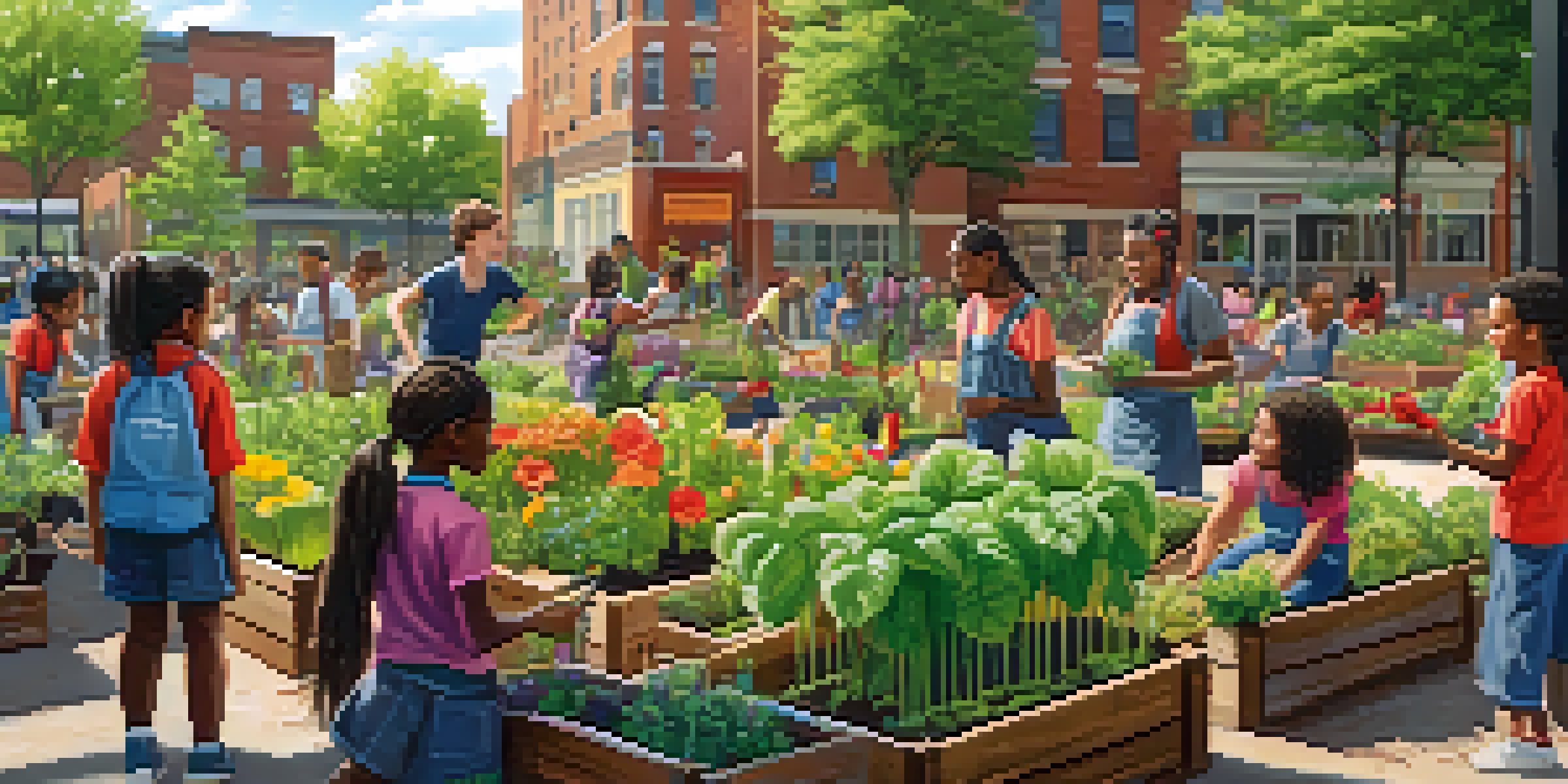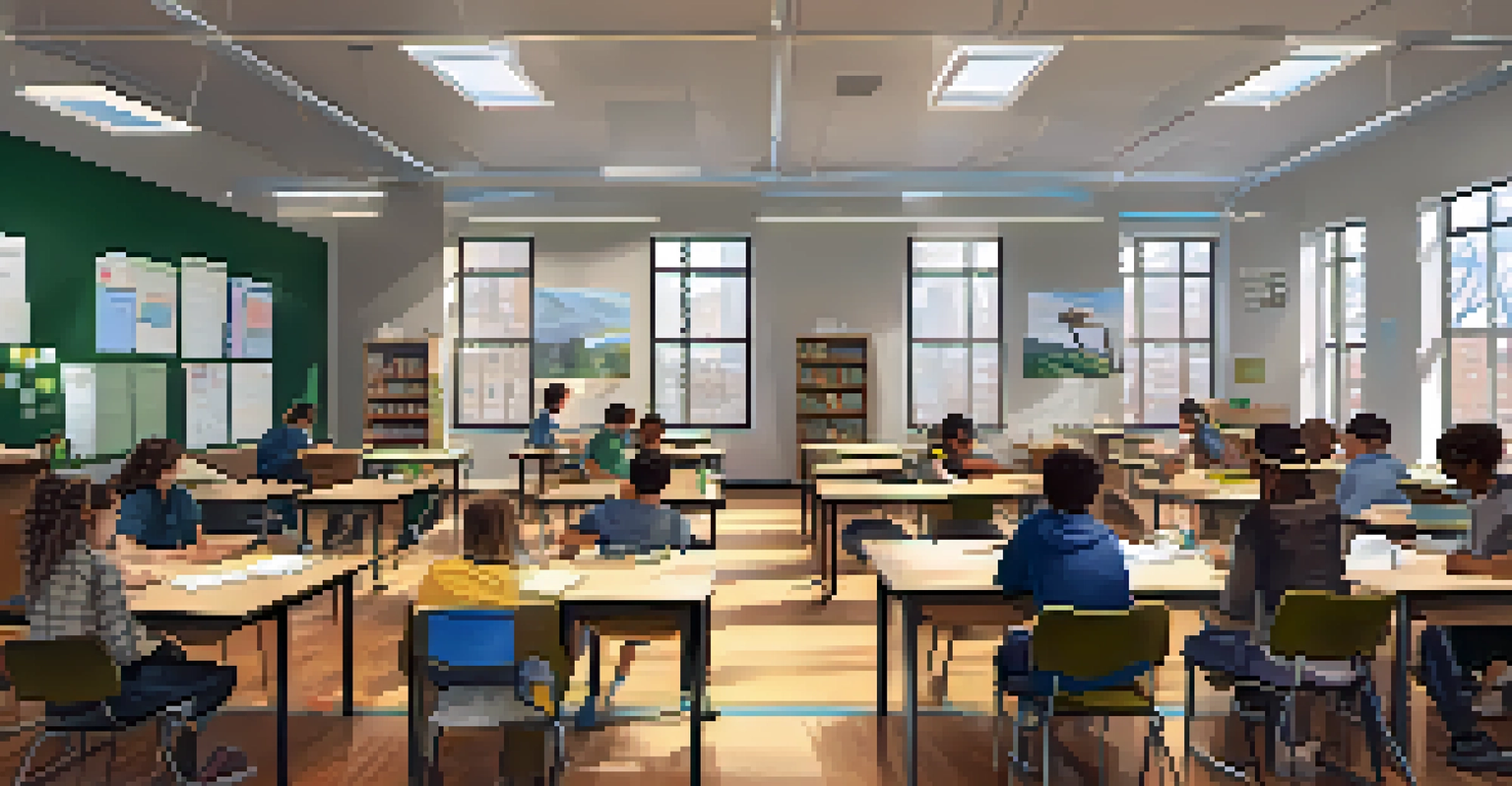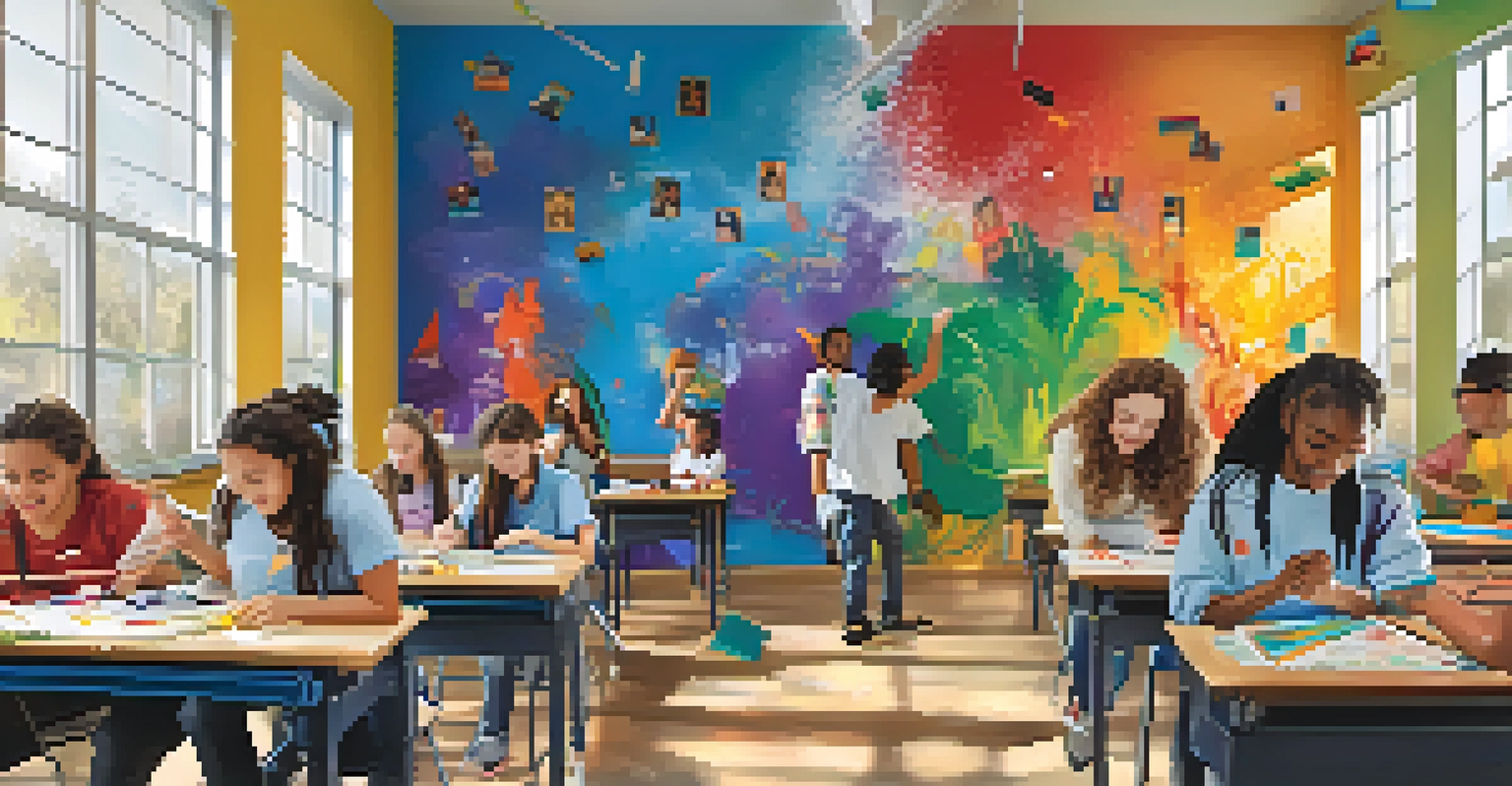Innovative Programs Transforming Education in New York City

Project Based Learning: Hands-On Education in NYC
Project Based Learning (PBL) is gaining momentum in New York City schools, emphasizing real-world applications of knowledge. Instead of traditional lectures, students engage in collaborative projects that stimulate critical thinking and creativity. For instance, a group of middle schoolers might partner with a local non-profit to develop a community garden, blending science with civic engagement.
Education is not the filling of a pail, but the lighting of a fire.
This method not only fosters a deeper understanding of subject matter but also enhances teamwork skills. Teachers act as facilitators, guiding students through the project process and encouraging them to take ownership of their learning. The results often extend beyond the classroom, as students feel a sense of pride in contributing to their community.
Related Resource
PBL is reshaping the educational landscape in NYC, making learning more relevant and engaging. As schools adopt this model, students are better prepared for future challenges, equipped with skills that are crucial in today’s workforce.
Tech-Driven Classrooms: Embracing Digital Learning
In NYC, classrooms are increasingly integrating technology to enhance the educational experience. Schools are equipping students with laptops and tablets, allowing for interactive lessons and personalized learning paths. This shift not only caters to different learning styles but also prepares students for a tech-centric world.

One notable example is the use of virtual reality (VR) in history classes, where students can 'visit' ancient civilizations or historical events. This immersive experience makes learning more vivid and memorable, sparking curiosity and engagement. Additionally, online platforms enable teachers to track student progress in real-time, tailoring instruction to meet individual needs.
Project-Based Learning Engages Students
PBL emphasizes real-world applications, allowing students to collaborate on projects that foster critical thinking and community involvement.
As technology continues to evolve, so does the potential for innovative teaching methods in NYC. By embracing digital tools, educators are transforming traditional classrooms into dynamic learning environments that inspire the next generation.
Social-Emotional Learning: Fostering Well-Being
Social-Emotional Learning (SEL) has become a cornerstone of education in New York City, emphasizing the importance of mental health alongside academics. Schools are implementing programs that teach students skills like empathy, resilience, and emotional regulation. This holistic approach recognizes that a student’s well-being is crucial to their academic success.
Tell me and I forget, teach me and I remember, involve me and I learn.
For example, many schools now incorporate mindfulness practices into their daily routines, helping students manage stress and build focus. Workshops and counseling sessions also provide safe spaces for students to express their feelings and navigate challenges. As a result, students develop stronger interpersonal skills and a greater sense of self-awareness.
Related Resource
SEL not only enhances the learning environment but also prepares students to face life’s challenges with confidence. By prioritizing emotional health, NYC schools are cultivating a more supportive and inclusive atmosphere for all learners.
Community Partnerships: Strengthening School Resources
In NYC, schools are forging powerful partnerships with local organizations to enhance educational resources and opportunities. These collaborations can provide students with access to mentorship programs, internships, and extracurricular activities that extend learning beyond the classroom. For instance, a partnership with a local museum might offer students hands-on experiences in art and history.
These community connections enrich the curriculum and expose students to diverse perspectives and career paths. Moreover, they often lead to resource-sharing, where schools can tap into specialized expertise or funding from local businesses and non-profits. This symbiotic relationship not only benefits students but also strengthens community ties.
Technology Enhances Learning Experiences
The integration of technology in NYC classrooms allows for interactive lessons and personalized learning paths, preparing students for a digital future.
By integrating community resources into the educational framework, NYC is creating a more holistic approach to learning that prepares students for futures that are both academically and socially enriched.
Inclusive Education: Supporting All Learners
Inclusive education is a priority in NYC, aiming to provide equitable learning environments for all students, regardless of their abilities. Schools are implementing strategies that cater to the diverse needs of learners, from those with disabilities to English language learners. This commitment ensures that every student has access to quality education and the support they need to thrive.
For example, many schools are adopting Universal Design for Learning (UDL) principles, which advocate for flexible teaching methods that accommodate various learning styles. This might include using assistive technology or differentiated instruction to meet each student’s unique needs. Such practices not only foster a sense of belonging but also enhance overall academic performance.
Related Resource
As NYC continues to prioritize inclusive education, it sets a standard for how schools can embrace diversity and support every learner. This approach not only enriches the educational experience but also prepares students for a diverse world.
STEM Initiatives: Preparing Future Innovators
STEM education (Science, Technology, Engineering, and Mathematics) is a focal point in NYC’s educational reform, aiming to prepare students for careers in these critical fields. Schools are introducing hands-on STEM programs that ignite curiosity and foster problem-solving skills. This might include robotics clubs or coding camps that allow students to explore technology in a fun and engaging way.
Moreover, partnerships with tech companies and universities provide students with real-world experiences and mentorship opportunities. By exposing students to cutting-edge technology and innovative thinking, NYC schools are paving the way for the next generation of innovators. These initiatives not only spark interest in STEM careers but also equip students with valuable skills for the future.
Inclusive Education Supports Diversity
NYC schools are committed to providing equitable learning environments through strategies that meet the diverse needs of all students.
As STEM education continues to grow in NYC, it emphasizes the importance of creativity and collaboration, positioning students to thrive in an ever-evolving job market. This focus on innovation is essential for cultivating a workforce that can tackle the challenges of tomorrow.
Arts Education: Cultivating Creativity and Expression
Arts education is gaining recognition in NYC as a vital component of a well-rounded curriculum. Schools are increasingly incorporating music, visual arts, and theater into their programs, understanding that creativity plays a crucial role in student development. Engaging in the arts not only enhances cognitive abilities but also fosters self-expression and emotional intelligence.
For instance, a local initiative might involve students collaborating on a mural that reflects their community's history, combining art with social studies. Such projects allow students to express their identities while learning about teamwork and cultural appreciation. Moreover, exposure to the arts has been linked to improved academic performance across subjects.

As NYC continues to prioritize arts education, it recognizes that creativity is not just an extracurricular activity but a fundamental aspect of learning. By nurturing artistic talents, schools are preparing students to think critically and innovate in all areas of life.